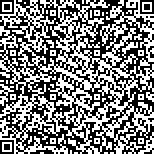| 摘要: |
| [摘要] 目的 丝状真菌在质谱前处理方法上尚无规范化指南,寻求高效前处理方法为实验的关键,该研究以梅里埃质谱仪(VITEK MS)为平台,探讨适用于质谱仪鉴定曲霉的最佳前处理方法。方法 收集2021年1月至2021年12月由广东省人民医院临床分离并经基因测序的非重复曲霉114株,以及标准曲霉菌株3株,分别采用磁珠研磨法、冷冻研磨法和甲酸萃取法对117株曲霉前处理操作后进行质谱检测,比较不同前处理方法下的鉴定率、置信度、峰数量、耗时以及图谱质量的差异性。结果 117株曲霉分别采用磁珠研磨法、冷冻研磨法和甲酸萃取法进行前处理后获得的质谱鉴定率分别为90.60%、61.54%和57.26%。磁珠研磨法的鉴定率显著高于其他两种方法(P<0.001),鉴定能力最佳,且获得的置信度和峰数量亦高于其他两种方法(P<0.05),所获得的蛋白特征峰数量更多、强度更强、更密集,结果可信度和图谱质量优于其他两种方法。 结论 曲霉使用磁珠研磨法前处理后进行质谱鉴定可获得较理想的鉴定效果和蛋白图谱质量,适合常规实验室曲霉的质谱鉴定。 |
| 关键词: 曲霉 磁珠研磨法 冷冻研磨法 甲酸萃取法 基质辅助激光解吸电离飞行时间质谱 鉴定 |
| DOI:10.3969/j.issn.1674-3806.2022.10.09 |
| 分类号:R 446.5 |
| 基金项目:国家自然科学基金面上资助项目(编号:82072380) |
|
| A comparative study on the results of the identification of Aspergillus by matrix-assisted laser desorption-ionization time-of-flight mass spectrometer using three pre-treatment methods |
|
YUAN Kai-xuan,OUYANG Feng, LIU Hong-ling, et al.
|
|
Department of Laboratory Medicine,Guangdong Provincial People′s Hospital(Guangdong Academy of Medical Sciences), Guangzhou 510080, China
|
| Abstract: |
| [Abstract] Objective There are no standardized guidelines for the pretreatment methods of filamentous fungi by mass spectrometry, and the key to the experiment is to find efficient pretreatment methods. This study explores the best pretreatment method suitable for the identification of Aspergillus by mass spectrometry using VITEK MS as the platform. Methods One hundred and fourteen non-repetitive Aspergillus strains were collected from Guangdong Provincial People′s Hospital during January 2021 and December 2021, which were clinically isolated in the hospital and sequenced and 3 standard Aspergillus strains were collected. The 117 Aspergillus strains were detected by mass spectrometry after pre-treatment using magnetic bead grinding method, freezing grinding method and formic acid extraction method, respectively. The differences in the identification rate, confidence level, peak number, time consumption and map quality were compared among the different pre-processing methods. Results The identification rates of the 117 Aspergillus strains by mass spectrometry were 90.60%, 61.54% and 57.26% respectively after pre-treatment with magnetic bead grinding, freezing grinding and formic acid extraction. The identification rate of magnetic bead grinding was significantly higher than that of the other two methods(P<0.001), and the identification ability of magnetic bead grinding was the best. The confidence level and number of peaks obtained by this method were also higher than those obtained by the other two methods(P<0.05). The number, intensity and density of protein characteristic peaks obtained by this method were more, and the confidence level and map quality of the results obtained by this method were better than those obtained by the other two methods. Conclusion The identification of Aspergillus by mass spectrometry after pre-treatment with magnetic bead grinding method can obtain ideal identification effect and protein map quality, which is suitable for the identification of Aspergillus by mass spectrometry in conventional laboratories. |
| Key words: Aspergillus Magnetic bead grinding method Freezing grinding method Formic acid extraction method Matrix-assisted laser desorption-ionization time-of-flight mass spectrometer Identification |

